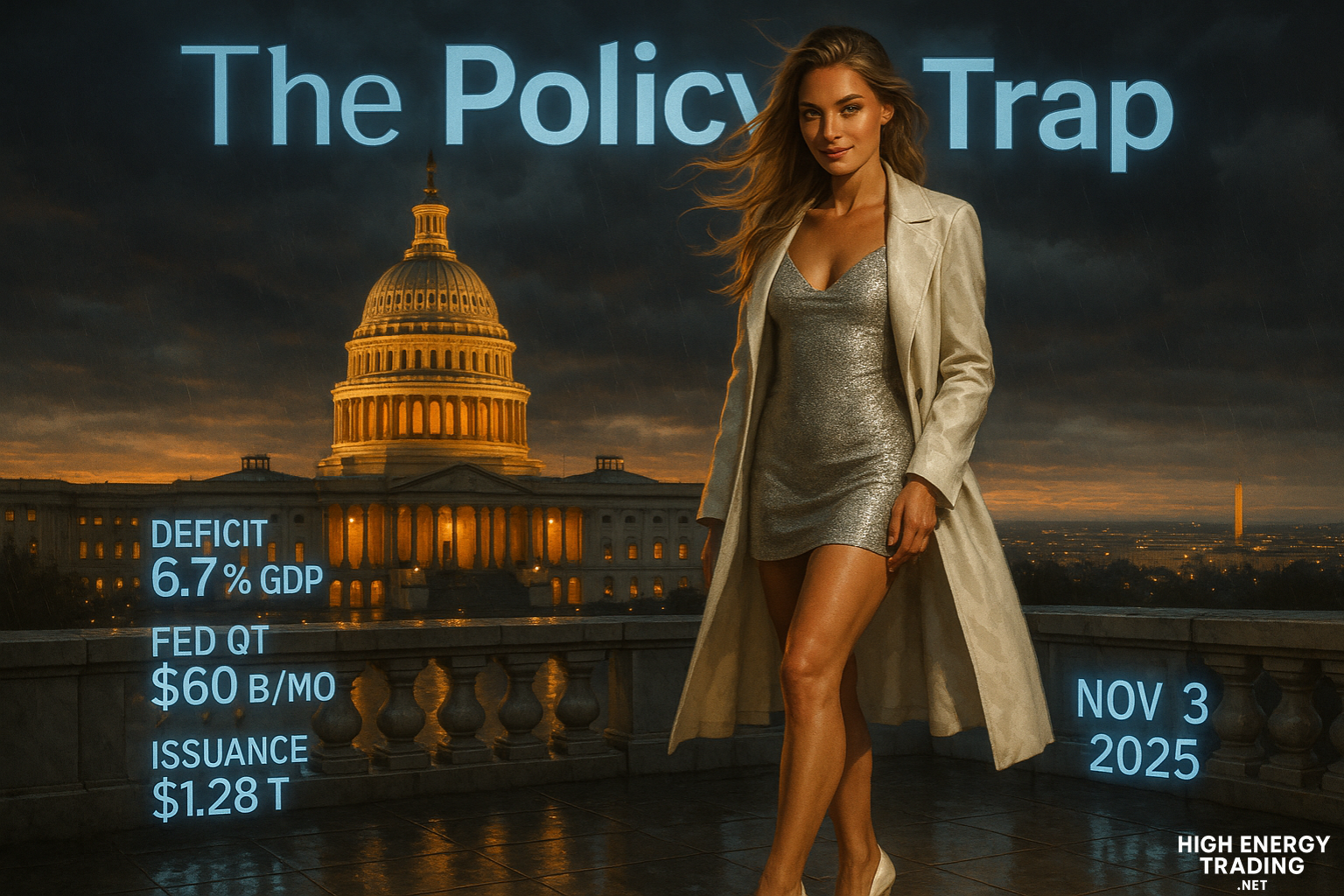The Politics of Volatility — When Populism Becomes the Market’s Shadow
Global markets are flirting with complacency even as politics fractures beneath the surface. In France, Prime Minister Sébastien Lecornu’s abrupt resignation plunged French yields and equities, while the yen collapsed after Japan’s elections tilted toward fiscal stimulus. Across developed markets, capital is chasing shelter, even though fundamentals whisper caution.¹
What’s unfolding now is more than a policy hiccup. It is a turning point in how markets price regime risk.
The new risk premium is political
In the past, markets shot through politics: GDP, earnings, rate cuts, growth cycles. But when cabinets collapse, coalition deals fracture, or populist agendas surge, the underlying assumptions behind asset pricing begin to mutate.
France’s recent chaos is more than meaningless theater. It signals that in Europe, mandates are weakening, and even capital cities are no longer reliable pivots. Germany, Italy, and Spain now share the same codependent fear: political legitimacy depends on fragile coalitions. That injects a new form of volatility into spreads, rates, and credit.
In Japan, the incoming leadership is expected to override the Bank of Japan’s tightening plan, tilt policy toward fiscal expansion, and weaken the yen.² That makes yen-dollar crosses a political bet, not a macro one. In such an environment, carry trades, JGBs, and regional equities can telescope volatility in months, not quarters.
Macro data becomes less reliable
Amid political noise, traditional macro datasets lose clarity. Labor data is revised, budgets are stalled, forecasts lack conviction. The market, deprived of clean signals, starts leaning on proxies: yields, volatility spreads, cross-asset dispersion.
That’s why we see gold surging even while equities press new highs. Investors fear that the macro script is breaking. They are fronting for collapse, not compression. It is no longer about inflation or growth trajectories. It is about political durability — who holds power, with what mandate, and under what constraints.
Volatility flows are the new alpha
Look for where professional capital is reallocating. Nomura, for instance, is expanding its rates and FX desks in anticipation of turbulence.³ That move betrays a belief that macro hedges will outperform directional equity bets.
In this environment, long volatility becomes not a tail hedge, but a necessary posture. Dispersion trades, variance arbitrage, cross-asset hedges, macro overlay strategies — these will outperform naive directional plays. The old “buy equities and push out duration” hand may not get you far ahead of the storm.
What to watch through year end
Track political realignments: Italian or Spanish debt auctions, French snap elections, Japan’s budget and tax proposals — these are now market catalysts.
Watch dispersion curves and volatility surfaces. If curve steepening accelerates, or VIX term structure inverts, that means markets are repositioning aggressively.
Monitor cross-asset correlation shifts. When assets unglue — equities vs rates, credit vs stocks, commodities vs bonds — that signals regime reallocation.
Parse balance of authority signals. Who’s pulling levers? Central banks, parliaments, technocrats? That balance is now more predictive than CPI prints or GDP revisions.
This is not markets catching geometry. It is markets reconciling with politics. And in 2025, the bull case must pass a political stress test, not just a growth one.
Markets are no longer chasing macro narratives. They are chasing legitimacy narratives.




